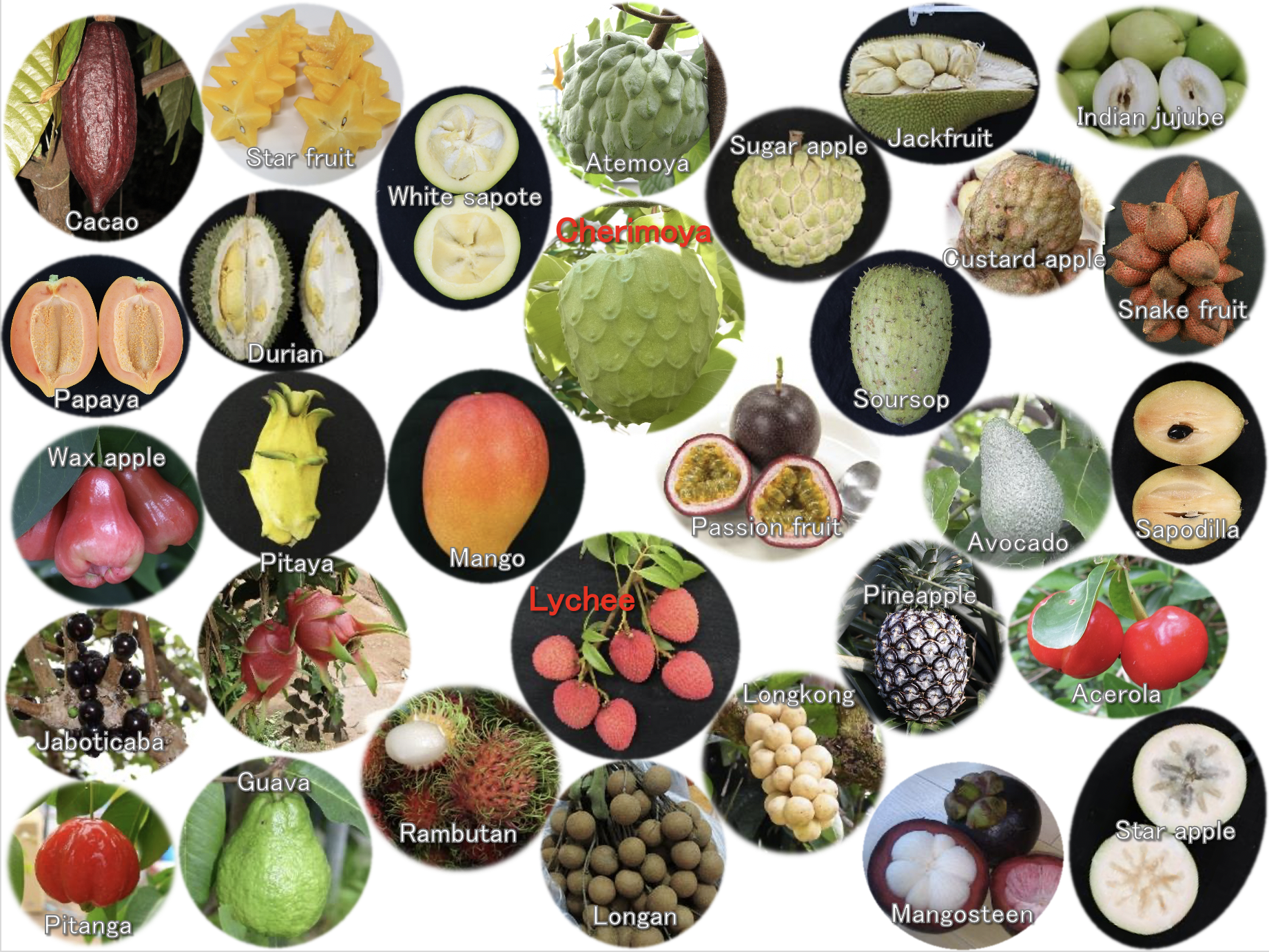Pick Up
451. Stabilization of Fruit Set and Production of Subtropical Fruit Trees

In Japan, interest in tropical fruits is increasing due to diversification of consumer preferences and as a countermeasure against global warming. A wide variety of tropical fruits such as mango, passion fruit, avocado etc. are now commonly found in stores and supermarkets. There is a high demand for tropical and subtropical fruits not only in Japan, but also in various subtropical and temperate regions of the world such as Europe, USA and Australia. Since many of these fresh fruits do not last long and are difficult to transport, attempts have been made to introduce and cultivate these species. However, because the environment differs greatly from the place of origin, it is difficult to stabilize fruit set in newly introduced areas, and this has hindered the expansion and spread of the market. In order to stabilize production and promote the spread of tropical fruits, it is important to understand the environmental conditions (temperature, humidity etc.) that inhibit flowering and fruiting of each species and to select cultivars (delicious, easy to produce etc.) that are suitable for the cultivation area. Such information and technology that will lead to the stable production of tropical fruits is also necessary in tropical and subtropical regions, which are the target areas of JIRCAS.
In 2020, Dr. MATSUDA Hiroshi received the Japanese Society for Tropical Agriculture (JSTA) Promotional Award for his research entitled “Studies on Cultivation Managements for Stable Fruit Set in Subtropical Fruit Trees: Cherimoya and Lychee” published in the Research for Tropical Agriculture (Vol. 14 No. 2:111-114), 2021. In this special lecture abstract, he proposed temperature management to stabilize fruit set of cherimoya, indigenous to cool tropical highland. He also proposed a method for collecting and storing pollen for artificial pollination in order to solve the problem of insufficient pollination in the case of lychee and summarized the results of a series of studies conducted at Kyoto University, which accumulated information on fruit quality and self-incompatibility of cultivars grown in temperate environments.
In Cherimoya, which is sensitive to temperature, temperature management during the flowering period were clarified for various stages from flower opening to fertilization in order to stabilize flowering and fruit set. In the case of lychee, cultivars with excellent fruit quality, self-incompatibility, and parthenocarpy have been clarified in temperate climate greenhouse cultivation, and significant progress has been made in the development of technology for artificial pollination to compensate for insufficient pollination. Such information on cultivation physiology and the development of cultivation technology will not only contribute to the production sites of newly introduced tropical fruit species in Japan and other countries, but will also be utilized for cultivation management such as stabilization of fruit set and yield prediction in existing production areas in the tropics.
In addition to cherimoya and lychee, there are many other tropical and subtropical fruit trees that need to be stabilized for fruit set. At the JIRCAS Tropical Agriculture Research Front (TARF) located in Ishigaki Island, the results and methodology of these studies are now being applied to other tropical fruit species, and field trials are being conducted on flowering control technology for mango and physiological responses to high temperatures in passion fruit to accumulate information that will lead to stabilization of fruit set. We will continue to disseminate information and technologies that will lead to the stabilization and spread of fruit production from Ishigaki Island to tropical and subtropical regions including Japan.
Reference
Matsuda H. (2021) Studies on Cultivation Managements for Stable Fruit Set in Subtropical Fruit Trees: Cherimoya and Lychee. Research for Tropical Agriculture Vol. 14 No. 2: 111-114. (In Japanese)
Contributor: MATSUDA Hiroshi (Tropical Agriculture Research Front)
